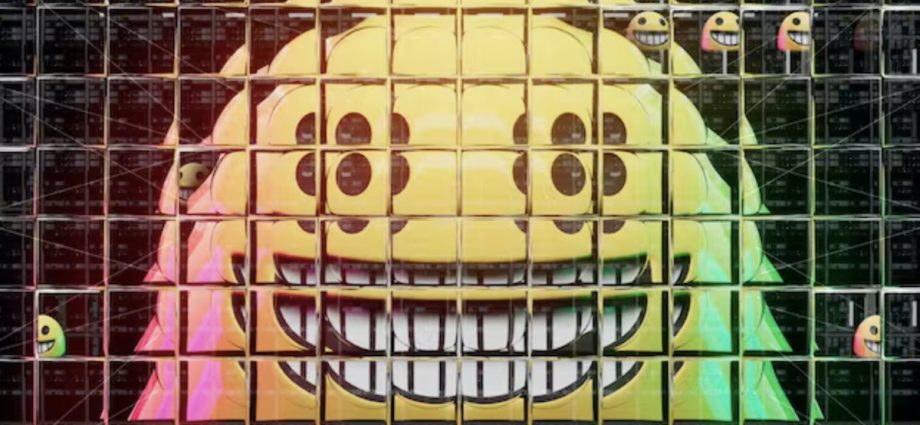NEW YORK – Microsoft has added about US$1.5 trillion to its market capitalization this year after the launch of ChatGPT. Nvidia has added about $640 billion. Overall, the market value of generative AI models has increased by several trillions of dollars. What is supposed to justify this kind of valuation?
Market research firms claim that the market for generative AI will reach $126.5 billion by 2031. That’s not a lot of revenue compared to the market valuation. Microsoft now sells at about 12 times sales, and that’s a natural monopoly.
Even if that estimate were correct, market valuations are three to five times higher than $126 billion of revenue would justify. And I don’t see how generative AI can throw off that level of revenue, not by an order of magnitude.
Just what is generative AI supposed to do? Supposedly it can answer customer queries, replace low-level programmers and produce better online search results. But how much revenue can that bring in?
Let’s do some back-of-envelope calculations.
Suppose that chatbots replaced every employee of every help desk in the United States. There are 38,808 help desk employees who earn on average $43,275 a year. Replace them all, and you save $1.68 billion a year. Of course, you can’t replace all of them, and chatbots cost something, so I’ll guess that potential savings are $1 billion a year, provided that the gizmo actually works.

Then there are computer programmers. ChatGPT can write basic code. There are 132,740 programmers in the US, so lets guesstimate that generative AI can replace the bottom quarter of them, or 33,185 programmers. The bottom quartile of programmers makes $34.84 an hour, according to the Bureau of Labor Statistics. That would save $2.312 billion, minus the cost of the AI program.
So far we’ve wiped out two major areas of employment, and saved a bit over $3 billion in paychecks. I don’t know where the marketing surveys came up with a $125 billion number, but it seems as if they are off by an order of magnitude.
There are plenty of other generative AI applications, for example, for medical diagnostics. But we’ve heard that story before. AI was supposed to read X-rays faster and more accurately than a human radiologist, but that turned out to be a bust.
“Radiologists have more reason than most to be disappointed, because CAD [computer-aided detection] in medical imaging was more than an unrealized promise. Almost uniquely across the world of technology, medical or otherwise, the hype and optimism around second-era AI led to the widespread utilization of CAD in clinical imaging. This use was most obvious in screening mammography, where it has been estimated that by 2010 more than 74% of mammograms in the United States were read with CAD assistance. Unfortunately, CAD’s benefit has been questionable. Several large trials came to the conclusion that CAD has at best delivered no benefit and at worst has actually reduced radiologist accuracy, resulting in higher recall and biopsy rates,” according to one study.
This isn’t the first instance of AI hype ballooning stock valuations.
Remember autonomous vehicles? Ford put $1 billion into an AV startup called Argo AI, valued at $12.4 billion in 2021, and at zero in October 2022, when it shut down. Driverless cars are the technology of a future that won’t come anytime soon, at least not in the United States.
The dirty little secret of AVs is that they require an enormous amount of data with a very short transmission time (low latency). America’s so-called 5G network doesn’t have the low latency required for AVs. It’s only a hyped-up 4G with a slow response time.
China already has autonomous taxi services in some cities. China’s 5G network is not only the world’s largest, but also offers a nearly instantaneous response time made possible by the new technology. AVs are a great idea when you have broad and straight roads (as in some Chinese cities), but not in the jumble of American urban landscapes.
Mark Zuckerberg’s Meta put $100 billion into a virtual reality world that couldn’t find enough visitors willing to wear heavy and expensive headsets. Meta’s stock price collapsed in the wake of the metaverse fiasco, but soared along with other tech companies in the AI bubble.
The hypothetical calculations above really are beside the point. Chat GPT interacts very badly with real human beings. By the standards of a human 10-year-old, it’s really, really dumb. It can’t make the kind of mental connections that make humor possible. In a recent essay for Law&Liberty, I reported some less-than-satisfactory exchanges with OpenAI’s chatbot on the subject of self-referential humor.
Joking aside, generative AI simply can’t fathom how human beings think and talk. Mental associations that come naturally to human beings are incomprehensible to generative AI models, unless the models happen to have been trained on an identical case in the past.

They won’t replace help desk representatives any time soon, let alone radiologists. And the trillions of stock market valuations that mushroomed in anticipation of generative AI will vanish like the other AI bubbles of the past few years.
AI, to be sure, works wonders when it is applied to routine tasks, for example, picking defective items off a conveyor belt, or manipulating autonomous cranes and trucks at a port. America’s largest port at Long Beach, California, is one of the world’s least efficient (it ranks number 300 on the World Bank list). It takes roughly 48 hours to unload a large container ship.
At China’s most modern port, Tianjin, a 5G network using AI systems designed by Huawei can unload the same ship in 15 minutes. Smart cranes find bar codes on containers, move them to autonomous trucks and go on to the next.
AI is there to free humans from mechanical tasks, not to make machines imitate humans. That’s where AI will add economic value.
Follow David P Goldman on Twitter at @davidpgoldman

